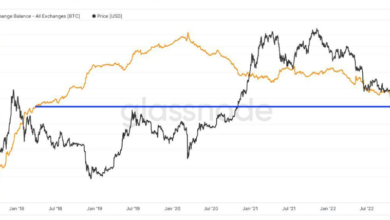How important are beauty machines?

Beauty machines have become integral tools in the cosmetics and skincare industry, offering a range of treatments from facial rejuvenation to body contouring. However, the process of bringing these machines from concept to market-ready involves several stages and can vary significantly in duration. In this article, we delve into the factors influencing the production time of beauty machines and explore strategies to optimize this process.
Introduction to Beauty Machines
Beauty machines encompass a diverse array of devices designed to enhance physical appearance and promote skincare. From laser hair removal systems to microdermabrasion devices, these machines cater to a growing demand for non-invasive cosmetic treatments. The intricate mechanisms and advanced technologies incorporated into these devices require meticulous planning and execution during the production phase.
Factors Affecting Production Time
Several factors influence the duration required to produce a beauty machine:
Complexity of the Machine
The complexity of the machine plays a pivotal role in determining the production timeline. Devices incorporating sophisticated technologies or multifunctional capabilities may entail longer development and manufacturing processes.
Customization Requirements
Customization adds an additional layer of complexity to the production process. Catering to specific client preferences or incorporating unique features demands thorough design iterations and testing phases, consequently extending the production timeline.
Availability of Components
The availability of components and materials is critical for timely production. Delays in sourcing essential parts can significantly impede progress and prolong the manufacturing duration.
Design Phase
The design phase lays the foundation for the production of a beauty machine and comprises several key stages:
Research and Development
In-depth research and development are essential for understanding market trends, technological advancements, and consumer preferences. This phase involves conceptualizing innovative features and functionalities to differentiate the product in the competitive landscape.
Conceptualization
Once the research phase is complete, designers conceptualize the aesthetic and functional aspects of the beauty machine. Detailed schematics and 3D models are created to visualize the final product and identify potential design challenges.
Prototype Development
Prototyping involves transforming conceptual designs into tangible prototypes for testing and validation. Iterative prototyping allows engineers to refine the design, optimize performance, and address any issues before moving to mass production.
Manufacturing Process
The manufacturing process encompasses the assembly of components and integration of technologies:
Component Sourcing
Procuring high-quality components from reliable suppliers is crucial for ensuring the durability and performance of the beauty machine. Manufacturers must maintain close partnerships with vendors to streamline the procurement process and mitigate supply chain risks.
Assembly
Skilled technicians meticulously assemble the components according to the product specifications and assembly instructions. Precision and attention to detail are paramount to guarantee the functionality and safety of the final product.
Testing
Rigorous testing procedures are conducted to evaluate the performance, reliability, and safety of the beauty machine. Functional tests, durability assessments, and compliance checks are performed to meet regulatory standards and quality assurance criteria.
Quality Control Measures
Quality control measures are implemented throughout the production process to uphold the highest standards of excellence:
Inspection and Testing
Quality inspectors conduct thorough inspections at various stages of production to identify any defects or deviations from specifications. Comprehensive testing protocols ensure that each beauty machine meets the required performance metrics and safety regulations.
Compliance with Regulations
Adherence to regulatory requirements is paramount in the beauty industry to guarantee the safety and efficacy of the products. Manufacturers must comply with stringent regulations imposed by governing bodies and obtain necessary certifications before market launch.
Production Timeline Examples
The production timeline for beauty machines can vary based on the complexity and customization requirements:
Basic Beauty Machine
A standard beauty machine with minimal customization may take approximately 6 to 12 months from design inception to market release. This timeline includes the design phase, prototype development, manufacturing, and quality assurance procedures.
Complex Beauty Machine with Customization
In contrast, a complex beauty machine incorporating advanced technologies and tailored features may extend the production timeline to 12 to 18 months or more. Customization requests, extensive testing, and regulatory approvals contribute to the prolonged duration.
Ways to Expedite Production Time
Despite the inherent complexities, Beauty Machine Manufacturer can adopt strategies to expedite the production time of beauty machines:
Streamlining Manufacturing Processes
Optimizing manufacturing workflows and eliminating inefficiencies can accelerate the production cycle. Lean manufacturing principles, automation technologies, and standardized processes enhance productivity and reduce lead times.
Optimizing Supply Chain
Maintaining robust supply chain management practices ensures timely procurement of components and minimizes production delays. Collaborating with reputable suppliers, implementing inventory management systems, and diversifying sourcing channels mitigate supply chain risks.
Investing in Technology
Embracing cutting-edge technologies such as additive manufacturing and digital prototyping expedites product development and reduces time-to-market. Advanced manufacturing techniques enhance agility, flexibility, and innovation capabilities.
Impact of Production Time on Market Competitiveness
The speed at which beauty machines are brought to market can significantly impact competitiveness and market share. Timely product launches enable manufacturers to capitalize on emerging trends, meet consumer demand, and gain a competitive edge over rivals.
Conclusion
The production of beauty machines is a multifaceted process influenced by various factors, including complexity, customization, and regulatory compliance. By implementing efficient design and manufacturing strategies, Beauty Machine Manufacturer can streamline production timelines and enhance market competitiveness. However, prioritizing quality and safety remains paramount to ensure customer satisfaction and regulatory compliance.




